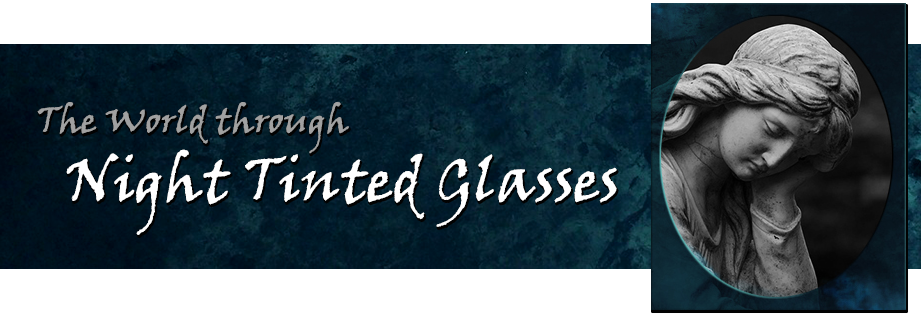 Spoilers ahoy!
Spoilers ahoy!Here is the latest in my reviews of all known adaptations of LeFanu's vampire novella Carmilla. Again, for the sake of those who haven't read earlier posts, I'm restricting myself to recognizable versions of the original story. Thus a movie with a lesbian vampire in it named "Carmilla" doesn't count unless it is in some sense trying to tell LeFanu's tale.
In 1982 an adaptation aired on Polish T.V. How I got ahold of a copy is fairly convoluted, involving an estate sale and a third party. Frankly, I'd never even heard of this one and was excited to set eyes on such a thing. Unfortunately, it is entirely in Polish, a language I do not speak and there are no subtitles. Yet I know the story well and this was a remarkably faithful version. Following it proved not difficult.
The title character is played by Izabela Trojanowska, who certainly brings to it an air of otherworldliness and predatory charm. She's evidently mostly known as a pop
 singer in Poland. I've learned little more about the production, sad to say.
singer in Poland. I've learned little more about the production, sad to say.What I can say, having watched it, is this might be the single most faithful version yet made. It begins with the prologue missing from every other filmed Carmilla. Then we view Laura's household as it is when the events of the story proper begin. For once she does indeed have two governesses, the older and no-nonsense Madame Perradon along with the more elegant and imaginative Mademoiselle de la Fontaine. We actually see the dynamic between them and Laura as well as Laura's father. We get a sense, for example, of the class differences between them. More (in fact, vital) a sense of Laura's place here is only too clear. Lonely, saddled with (relatively mild) rules and subtle expectations in lieu of distractions or pleasures. She comes across as a waif, but not really an ingenue. More like a girl on the verge of womanhood with little or no idea what that means, obedient by habit almost to the point of invisibility.
One thing that impressed me about this was how much the story remained from her POV. More than once the fact people were keeping things from her became vivid
 through the camera work. That their mysterious guest focuses nearly all her attention on Laura of course proves intoxicating. Carmilla's arrival matches that of the book, but handled with what clearly couldn't have been a large budget. No carriage accident on screen, but as staged there was no need. A nice touch were the servants accompanying Carmilla's "mother." Not only silent, each had a kerchief tying their jaws shut, precisely as undertakers treated the dead in the 19th century. Shades of Marley in A Christmas Carol.
through the camera work. That their mysterious guest focuses nearly all her attention on Laura of course proves intoxicating. Carmilla's arrival matches that of the book, but handled with what clearly couldn't have been a large budget. No carriage accident on screen, but as staged there was no need. A nice touch were the servants accompanying Carmilla's "mother." Not only silent, each had a kerchief tying their jaws shut, precisely as undertakers treated the dead in the 19th century. Shades of Marley in A Christmas Carol.Also included was the Mountebank selling charms against the vampire, although he is freaked by Carmilla's presence and later is brought back to do a drunken scene in the local graveyard which substitutes for the whole Baron Vordenburg sequence. For the sake of plot, Laura's father seems to be merged with General Spielsdorf, allowing him to have the scene of "catching" the vampiress about to feed. Good stuff! The peasantry, coming to ask help of the Polish equivalent of country squire worked well, allowing a flashback to the legend of a vampire hunter in the past. Like I said, the elements of the novella remained largely intact.
Mostly, though, what pleased me was the atmosphere--like an odd ghost story--and the relationship between the two female leads. Although predatory, this Carmilla seemed to feel a little guilt as her friend weakened. Laura herself seemed so modest as to willingly hold on to whatever little pleasures she could find, hardly thinking to ask for more. As her only friend is hunted down and destroyed, she seems in shock. Certainly no one seems to think her deserving of much comfort. Protection, yes. Care, certainly. But that she might have had feelings for this woman never seems to enter into anyone's mind.
I'll confess frankly to a wish the relationship between the two had been more sensual, that Carmilla be a bit more tormented a la Ingrid Pitt in The Vampire Lovers. But
 that is personal taste.
that is personal taste.Yet all this leads up to a startling little denoument. In the aftermath of the vampire's destruction, Laura's father and Mademoiselle de la Fontaine fall asleep late at night in the main room. Each is in a comfortable chair as the candles flicker and the fireplace glows. The door to Laura's bed room opens. The girl emerges, wearing only her long white nightgown and for the very first time her hair is completely undone, like a pale mane of some animal. She glides into the room, waking no one. Her eyes fix upon the exposed throat of her governess...
Overall I was very impressed by this version. Very impressed indeed. Now if I can only find some English subtitles!







